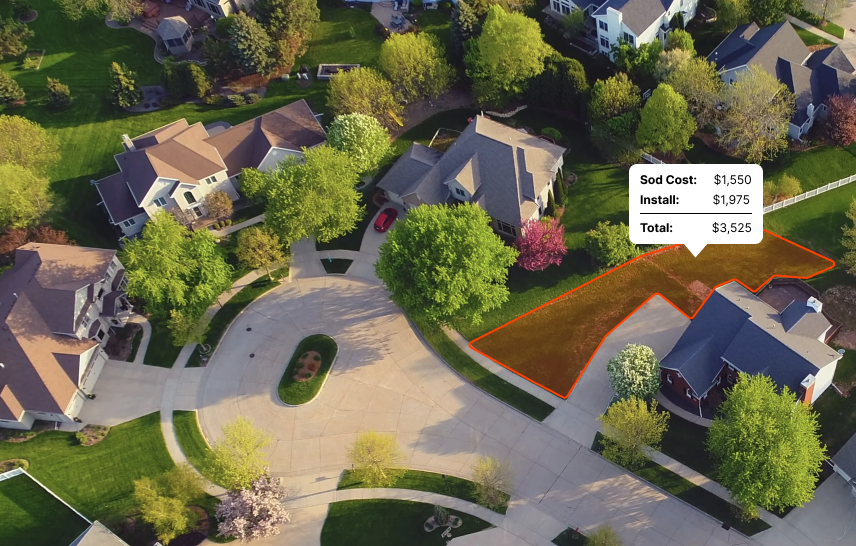This means that West Virginia is suitable for growing a wide variety of grasses, as it falls in both zones.”
Introduction
West Virginia has a humid subtropical climate in the southern regions and warm-summer humid continental climate in the northern regions. The state experiences cold winters and hot summers, with annual precipitation ranging from 30 to 60 inches depending on location.
Due to the varying climate zones, different types of grass thrive in different regions of West Virginia. Generally, cool-season grasses like Kentucky Bluegrass, Ryegrass, and Fescue do well in the northern regions, while warm-season grasses like Bermuda, Zoysia, and St. Augustine do better in the southern regions.
The best time to lay grass in West Virginia is during the late summer or early fall, when temperatures are cooler and rainfall is more frequent. This allows the grass to establish a strong root system before the winter months.
West Virginia falls under the grass zone of the cool-season and warm-season grasses. Cool-season grasses are best grown in zones 1-7, while warm-season grasses are best grown in zones 8-12.
What are the best sod types for WV?
In the world of landscaping, not all grasses are created equal. Each thrives in a specific climate zone: cool, warm, or transition.
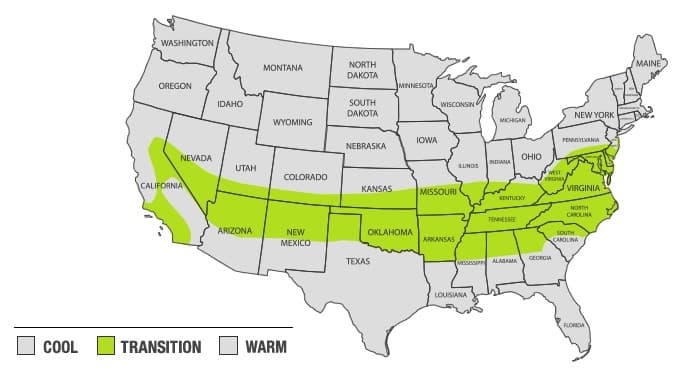
West Virginia, with its transition zone climate, prefers a particular set of grasses that relish the a wide range of temperatures. The following sods are the easiest to grow and maintain in West Virginia:
While it's possible to grow grasses meant for other regions with proper care, attention and timing, these are the most common grasses in West Virginia for residential lawns.
Level Up Your Lawn Skills
Once per week we'll send you an interview from someone who has mastered the art of lawn care.
Recommended species for shade
In West Virginia, not all yards are bathed in constant sunlight. Lucky for us, there are grass types specifically suited for less sunlit spaces. One of our top picks for shaded areas is the Fine Fescue. With its ability to survive in as little as four hours of sunlight a day, it's a warrior in the shadows.
Fine Fescue thrives in cooler temperatures so it doesn't marinate in West Virginia's sweltering summers. Think fine wine, not toast. The grass is resilient and bounces back quickly from any rough play or pet shenanigans. No more torn up lawns after that family football match, we promise.
Next up, we've got the Tall Fescue. It's like the Fine Fescue's bigger, tougher cousin. More robust and dark green in color, it’s as attractive as it is shade-tolerant. Needing about five hours of sun a day, it's perfect for those lawn patches under your favorite apple trees.
Then there's the Kentucky Bluegrass. A bit of a diva, but we believe she’s well worth the effort. Known for its beautiful dense carpet-like appearance, this grass variety needs a minimum of six hours of sunlight and regular watering. Handle with care, and you have the Beyoncé of lawns.
Lastly, the Rough Bluegrass earns a shoutout. While it’s not as visually striking as its Kentucky cousin, it is one of the most shade-tolerant grasses available. Rough around the edges? Maybe. But it only needs about three hours of sunlight and can handle frequent foot traffic.
Remember, sod placement in shadowy areas is an art, not a chore. With these grass types in your arsenal, your West Virginia lawn will be the talk of the town, or at least the neighborhood barbecue.
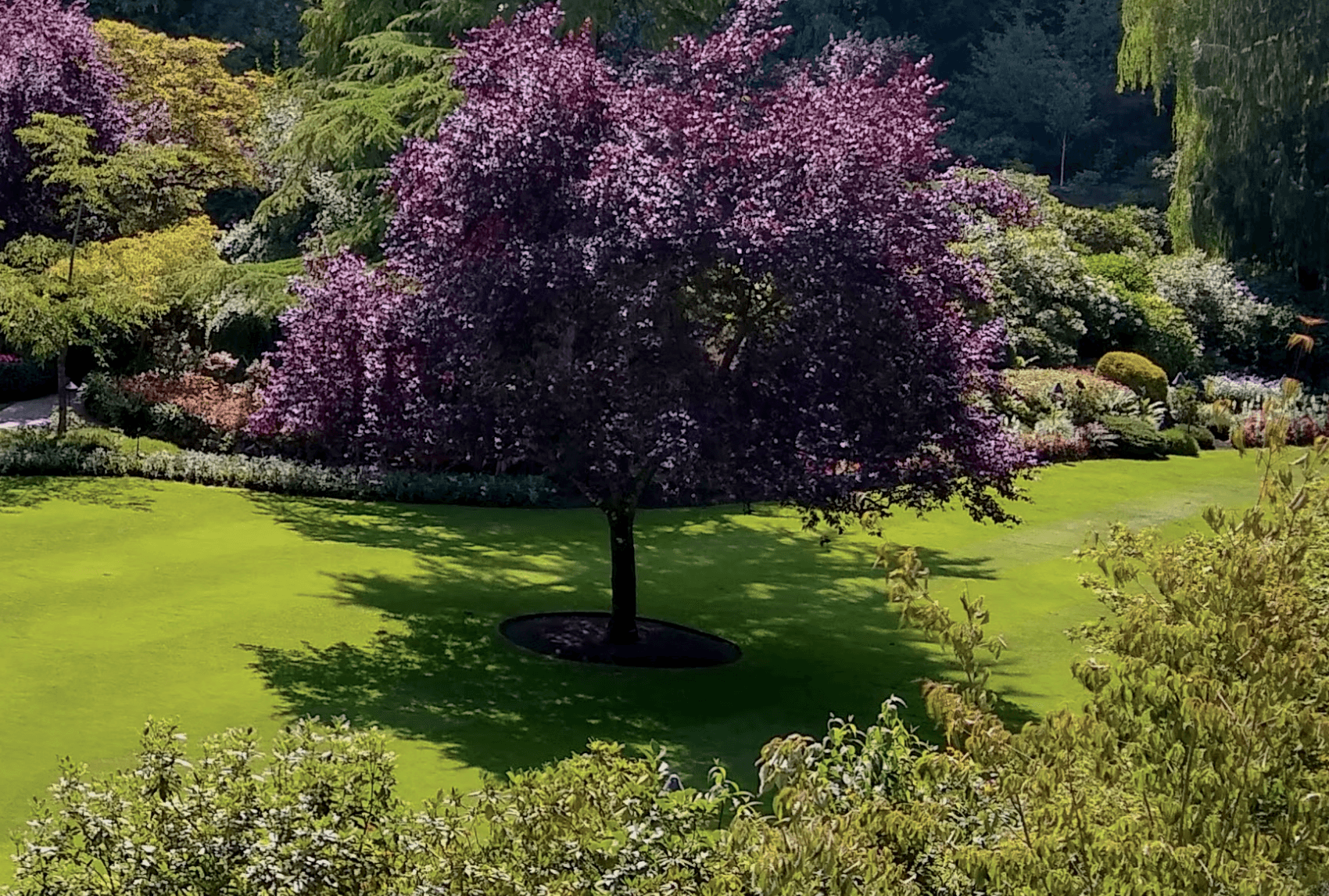
Recommended for full sun or partial sun
Choosing the right sod for your lawn depends heavily on the sunlight exposure in your yard. Different grass types have varying light requirements for optimal growth and appearance. Assessing whether your lawn receives full or partial sun is essential in selecting sod that will flourish and stay healthy in your specific environment.
Below are some sod options recommended for either full sun or partial sun conditions in WV:
| Grass Type | Sun | Good to Know |
|---|---|---|
| Tall Fescue | Partial | Tall Fescue is adaptable to a range of conditions, including partial sun, and is known for its deep root system and tolerance to drought. |
| Kentucky Bluegrass | Full | Kentucky Bluegrass prefers full sun and is prized for its fine texture, rich color, and ability to recover quickly from damage. |
| Perennial Ryegrass | Full | Perennial Ryegrass thrives in full sun and is known for its rapid germination, fine texture, and bright green color. |
| Fine Fescue | Partial | Fine Fescue is well-suited for partial sun and is appreciated for its fine texture, shade tolerance, and low maintenance requirements. |
What varieties stay green year-round?
As with anything agriculture related, there is some nuance to this question. There are many grasses that can stay green year round in but it depends heavily on your location within West Virginia as well as any microclimates that may exist.
The following grasses have the ability to stay green year round in West Virginia:
| Grass Type | Caveats |
|---|---|
| Tall Fescue | It typically stays green throughout the year in milder climates, given that it isn't overly stressed by heat or drought in the summer. |
| Kentucky Bluegrass | It can retain its green color for much of the year when well-maintained, though harsh winter temperatures can push it towards dormancy and a browner hue. |
| Perennial Ryegrass | It can stay vibrant and green throughout the year in many climates, unless conditions are extremely cold or dry. |
| Fine Fescue | It keeps its green color throughout the year in ideal conditions. If the winters are particularly harsh, it may lose some color. |
What is the best time to lay sod in West Virginia?
For transition zones, consider the type of sod. For warm season grasses, aim for late spring. This gives them a full summer to establish before winter. For cool season grasses, fall is best, allowing roots to develop in mild temperatures. Whichever you pick, avoid extremes of summer and winter. So, late spring for warm grasses, fall for cool ones, and skip the severe seasons.
As you can see in the image below, you'll notice the most shoot growth (the grass above ground) and root growth in the spring and fall for cool season grases and during the summer for warm season grasses:
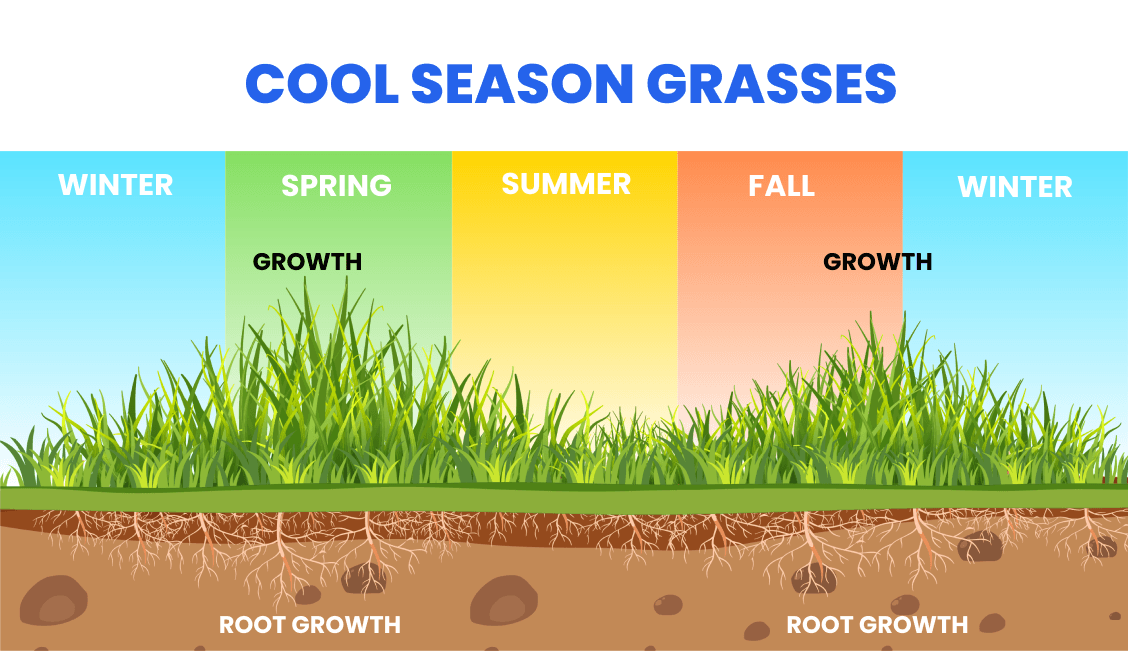
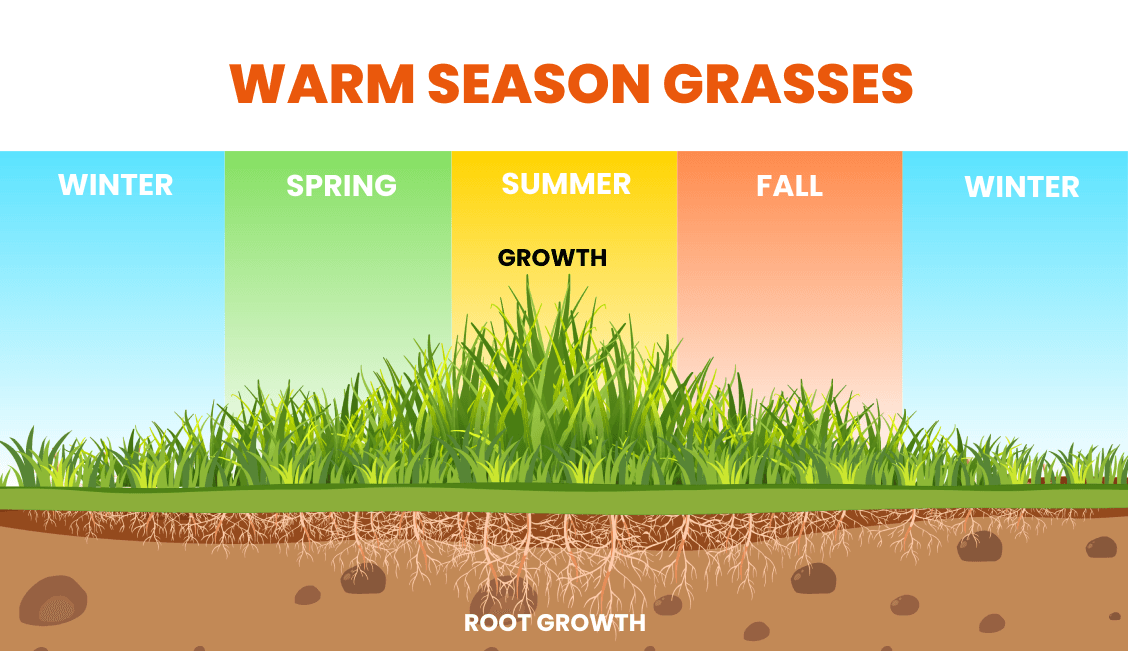
Find reputable companies for installing sod in WV
Here are the top problems you'll face when trying to get sod installed by a landscaping company:
- They're not transparent about pricing. You'll often get a quote that's way higher than you'd expect.
- They're hard to get ahold of on the phone or you'll reach out online but won't hear back.
- It's hard to pin them down for a specific date. Because you can only bring sod from the farm when there's decent weather, this causes some delays at times. It also has a short shelf life, so it's important to get it installed within a day or two of delivery.
We've done all the work for you. Click below to get a quote from one of the top installers in West Virginia.

